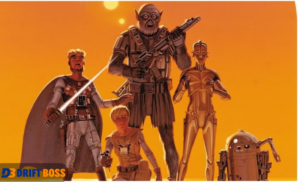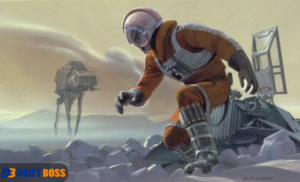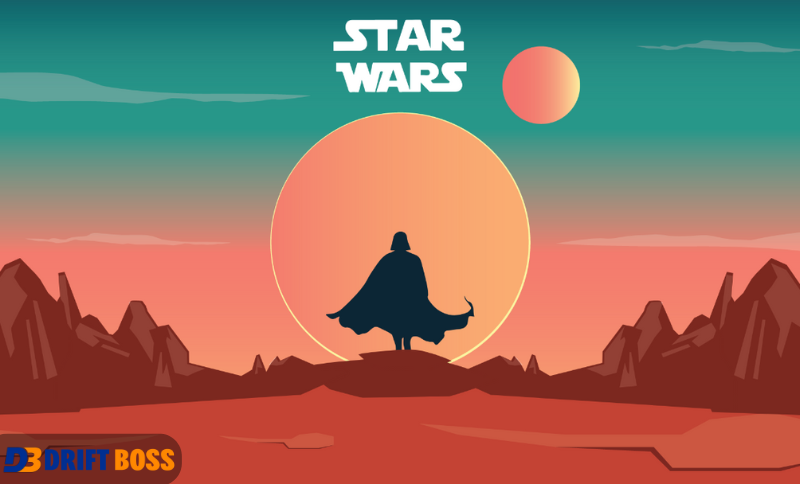Few franchises have captivated audiences as profoundly as Star Wars. A massive part of its success is the breathtaking Star Wars artwork that has defined the saga. Whether it’s concept Star Wars artwork, the legendary illustrations of Ralph McQuarrie, or stunning Star Wars artwork wallpaper, these visuals have shaped the universe we know and love. From the earliest sketches to high-definition digital masterpieces, the artistry behind Star Wars artwork continues to inspire fans worldwide.
The Origins of Star Wars Artwork: Concept Art That Shaped the Galaxy

Before Star Wars became a global phenomenon, it started with a series of concept sketches. These early works helped visualize George Lucas’ ambitious vision for a sci-fi epic unlike anything seen before. One name stands out in this early creative process—Ralph McQuarrie.
Ralph McQuarrie’s Star Wars Artwork: The Blueprint of a Saga
McQuarrie’s influence on Star Wars artwork is legendary. His paintings shaped the design of iconic characters, planets, and ships, including:
- Darth Vader: Initially envisioned as a samurai-inspired figure with a respirator mask, McQuarrie’s design became the final look of the Sith Lord.
- C-3PO and R2-D2: His early sketches resembled the humanoid robot Maria from Metropolis, blending classic sci-fi aesthetics with a fresh Star Wars feel.
- Cloud City: The floating metropolis of Bespin was brought to life through McQuarrie’s atmospheric, futuristic designs.
- X-Wing and TIE Fighter: The thrilling dogfights between these iconic starfighters originated from his illustrations.
Even decades later, McQuarrie’s influence is still present, inspiring The Mandalorian, Rebels, and other modern Star Wars projects.
Evolution of Star Wars Artwork: From Hand-Painted to Digital Masterpieces
The original trilogy relied on traditional paintings and matte backgrounds, while today’s HD Star Wars artwork takes advantage of cutting-edge digital tools. Here’s how Star Wars art has evolved over the years:
Traditional Painting & Matte Art (Original Trilogy)
- Artists like Ralph McQuarrie and Joe Johnston used oil paints and airbrushing techniques.
- Hand-painted backdrops created immersive alien landscapes.
- Matte paintings provided deep, cinematic backgrounds for planets like Tatooine and Hoth.
CGI and Digital Art (Prequel Trilogy & Beyond)
- The rise of digital technology allowed for more concept Star Wars artwork.
- CGI-enhanced environments, like Coruscant, became standard.
- High-resolution textures and detailed character models brought the galaxy to life.
Photorealistic and HD Star Wars Artwork (Disney Era)
- Artists use software like Photoshop, Procreate, and 3D rendering tools.
- Hyper-detailed designs of ships, creatures, and battle scenes.
- Seamless integration of practical effects with digital backgrounds.
Star Wars Artwork Wallpaper: Stunning HD Visuals for Fans
For fans who love decorating their screens with HD Star Wars artwork, there are endless wallpaper options. Popular styles include:
Classic & Retro Artwork
- Posters inspired by original trilogy designs.
- Vintage aesthetics featuring Luke, Leia, and Vader.
Dark Side vs. Light Side Themes
- Wallpapers split between Sith and Jedi.
- Dramatic color schemes with red (Sith) and blue (Jedi) contrasts.
Minimalist Star Wars Artwork

- Simple yet striking designs focusing on key symbols.
- Silhouettes of Darth Vader, Yoda, or the Millennium Falcon.
Cinematic Scenes in HD
- Epic battle sequences from The Clone Wars and The Mandalorian.
- High-definition renders of famous duels like Obi-Wan vs. Anakin.
You can find thousands of Star Wars artworks wallpaper options on sites like DeviantArt, ArtStation, and official Star Wars pages.
Famous Star Wars Artists: The Visionaries Behind the Art
Many talented artists have contributed to the galaxy’s rich visual legacy. Some of the most influential include:
| Artist Name | Notable Contribution |
|---|---|
| Ralph McQuarrie | Original trilogy concept art & designs |
| Doug Chiang | Prequel & sequel trilogy concept art |
| Ryan Church | Digital concept art for Episode I-IX |
| Ian McCaig | Character designs for Darth Maul, Padmé |
| Phil Tippett | Creature & stop-motion animation designs |
How to Create Your Own Star Wars Artwork
For aspiring artists, creating Star Wars artworks can be an exciting challenge. Here are some tips:
Study Existing Star Wars Art
- Analyze the work of McQuarrie, Chiang, and McCaig.
- Understand the color schemes, perspectives, and themes used in Star Wars.
Choose Your Style
- Traditional sketches for character design.
- Digital painting for cinematic scenes.
- 3D modeling for futuristic ships and landscapes.
Use the Right Tools
- Procreate for digital sketching.
- Photoshop for painting and rendering.
- Blender or ZBrush for 3D modeling.
Join the Star Wars Art Community
- Share your work on platforms like DeviantArt, ArtStation, and Instagram.
- Enter official Star Wars fan art contests.
- Engage with other artists for feedback and inspiration.
Conclusion:
From the pioneering concept Star Wars artworks of Ralph McQuarrie to today’s stunning HD Star Wars artworks wallpaper, the visual storytelling of Star Wars remains a cornerstone of its success. Whether you’re a fan admiring the art or an artist creating your own vision of the galaxy, Star Wars artworks continues to inspire and expand the universe in ways that words alone cannot.
FAQs
1. Who created the original Star Wars artworks?
Ralph McQuarrie is the most famous Star Wars concept artist, shaping the visual style of the original trilogy.
2. Where can I find HD Star Wars artworks wallpaper?
You can find high-quality wallpapers on sites like DeviantArt, ArtStation, and official Star Wars websites.
3. How has Star Wars artworks evolved over the years?
It transitioned from traditional hand-painted concept art to digital masterpieces using CGI and 3D modeling.
4. What tools do artists use for Star Wars artworks today?
Artists use Photoshop, Procreate, Blender, and ZBrush for creating detailed digital paintings and 3D models.
5. Can I create and sell my own Star Wars artworks?
Fan art is widely accepted, but selling it commercially requires permission from Lucasfilm.







